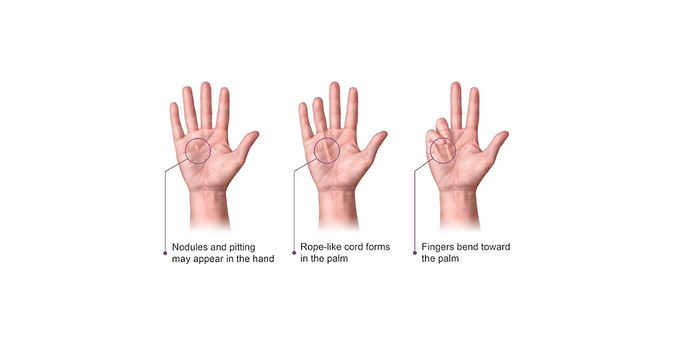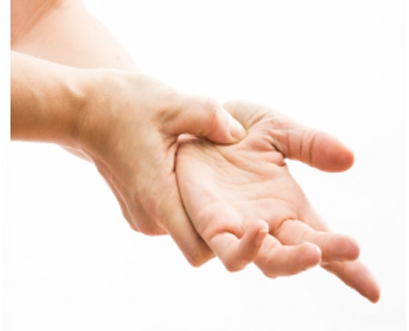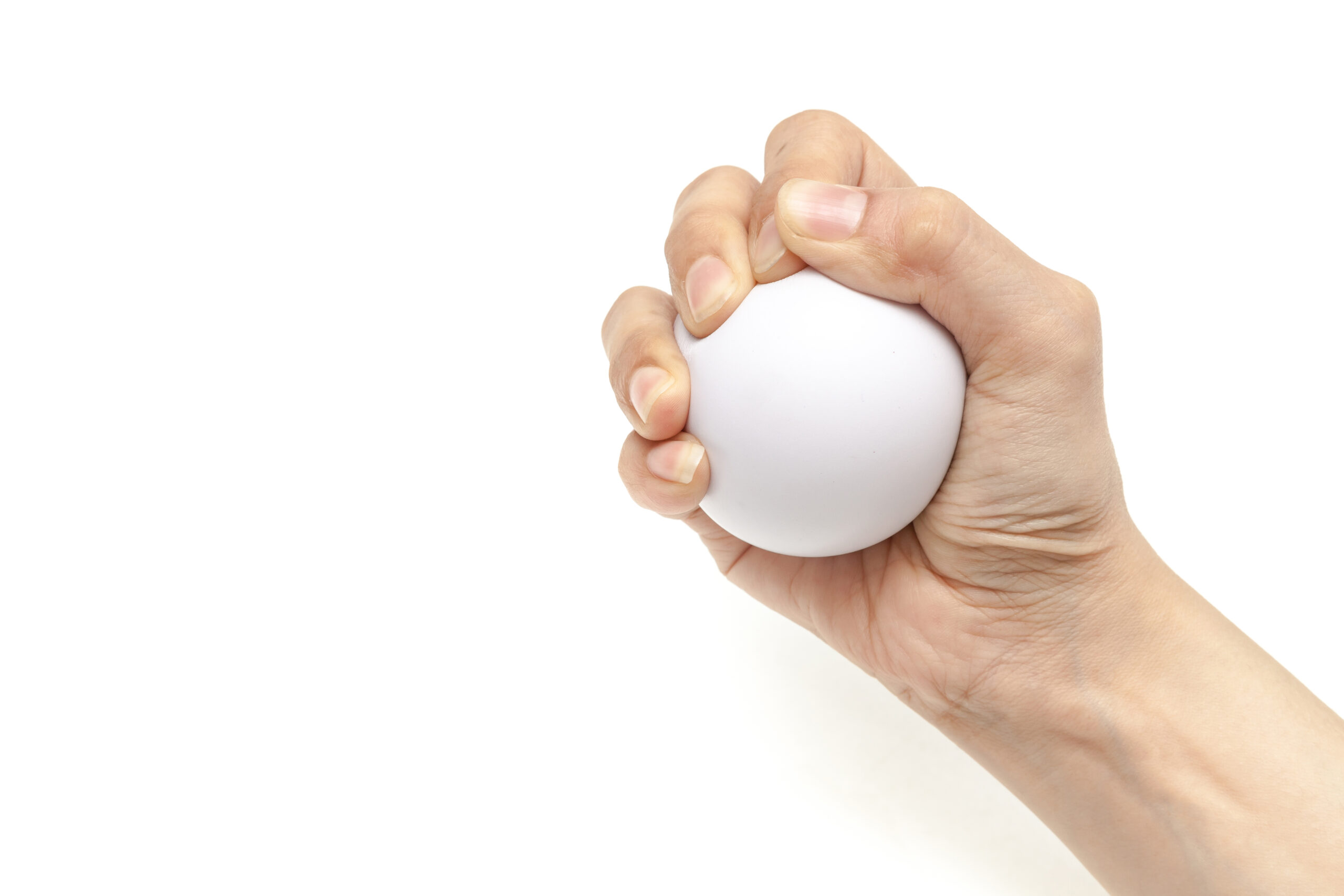The cost of Dupuytren’s contracture surgery can widely vary. Dr. Azouz will determine the cost of surgery through a medical history and physical examination. Many insurance companies consider Dupuytren’s Contracture surgery medically necessary and do contribute to the cost of surgery, anesthesia and therapy. For patients that do not have insurance, cash pay prices can be negotiated.
Dupuytren’s Contracture Surgery: Dallas Hand Surgeons Dr. David and Solomon Azouz offer Effective Surgery with Rapid Recovery Surgery
Dallas Plastic and Hand Surgeons Dr. David and Solomon Azouz review Dupuytren’s Contracture: symptoms, surgical, non-surgical treatment, cost, insurance, and recovery.
What Is Dupuytren’s Contracture?
Dupuytren’s contracture is a hand deformity that usually progresses slowly and affects adults later in life. The condition affects a layer of tissue that lies under the skin of your palm called the palmar fascia. These knots of tissue eventually create thick cords and nodules. The cords and nodules can be painful and can pull one or more fingers into a bent position. Affected fingers often can’t be straightened completely, which can complicate everyday activities.
What Is the cause of Dupuytren’s Contracture?
The overall cause of Dupuytren’s contracture is genetically inherited. The condition tends to run in families, especially in men of Northern European descent. Alcohol and tobacco use, diabetes, and trauma can also increase the risk. Dupuytren’s can be more aggressive in some family members as compared to others and can even skip generations.
Symptoms
Symptoms of Dupuytren’s contracture may include:
- Lumps and pits within the palm. The lumps are generally firm and adherent to the skin. Thick cords may develop from the palm into one or more fingers.
- These cords may cause bending of the fingers. In many cases, both hands are affected, but each hand can be affected differently.
- The ring and small fingers are most commonly involved.
The severity of Dupuytren’s and progression:
Dupuytren’s Contracture is typically not painful; however, the lumps can be uncomfortable in some people and complicate everyday activities. It is difficult to predict how the disease will progress. Some people have only small lumps or cords while others will develop severely bent fingers. The disease tends to be more severe if it occurs at an earlier age.

Surgery for Dupuytren’s Contracture
Surgical management of Dupuytren’s has been shown to be the most effective treatment. The goal of surgery is to restore motion in the fingers and to excise scar tissue while preserving the tendons, nerves, and arteries.
Dr. Azouz will make an incision on the palm to divide and remove thickened bands of tissue.
A variety of techniques are used to close the wound, and in most cases, a primary repair is possible. In advanced cases, a skin graft is needed to close the skin. To do this, Dr. Azouz uses healthy skin from another area of the body for closure.
Recover for Dupuytren’s Contracture
Once you have surgery for your Dupuytren’s contracture, the next stage is your recovery. In the first week or two after surgery, you may have pain, swelling, tingling, or numbness in your palm and fingers.
Over-the-counter pain medicines usually address the sensitivity. Two or three weeks after your procedure, Dr. Azouz will remove any stitches used in your surgery.
Following surgery, you will likely have to wear a hand splint for a few weeks. You may also need hand therapy for to help regain strength and movement back in the hand.
Any tissue scarring from your Dupuytren’s surgery significantly diminishes. While Dupuytren’s is surely an inconvenient condition, surgery can be critical in restoring the use of the hands without restriction.

Dupuytren’s Contracture Surgery Frequently Asked Questions
Nonsurgical Treatment for Dupuytren's Contracture
Dr. Azouz may suggest Nonsurgical treatments in the early stages of Dupuytren’s. However, most studies conclude that surgical management of advanced Dupuytren’s has the greatest efficacy and longest-lasting results.
Stretching and Splinting
Dr. Azouz may recommend stretching and splinting for the mildest forms of Dupuytren’s or in combination with surgery for more advanced cases. In some cases custom made splints may be created in conjunction with a hand therapist.
Steroid Injections
Injecting steroids into a Dupuytren’s nodule may be helpful in some patients. Often patients require multiple injections and steroids my be less effective in the later stages of Dupuytren’s and may also lead to tendon ruptures.
Enzyme Injections
Xiaflex (collagenase) is an evolving treatment of Dupuytren’s. The enzyme breaks up the collagen while preserving tendons, nerves, and arteries. Most patients need one or two injections and skin tears are common. The literature suggests that surgical management of Dupuytren’s is still longer lasting and more effective than collagenase injections.
Dr. Azouz's Locations
Hand surgeon Dr. Azouz has privileges at a variety of hospitals and emergency rooms throughout the DFW metroplex including Dallas, Fort Worth, Richardson, Plano, Flower Mound, Addison. Patients frequently travel to see Dr. Azouz from Frisco, Allen, Mckinney, Arlington and Rockwall. It is not uncommon for patients to even travel from across Texas including East Texas (Tyler, longview), West Texas (Midland, Odessa) and central Texas (Waco, Austin) to see Dr. Azouz.
Dr. Azouz may suggest Nonsurgical treatments in the early stages of Dupuytren’s. However, most studies conclude that surgical management of advanced Dupuytren’s has the greatest efficacy and longest-lasting results.
Stretching and Splinting
Dr. Azouz may recommend stretching and splinting for the mildest forms of Dupuytren’s or in combination with surgery for more advanced cases. In some cases custom made splints may be created in conjunction with a hand therapist.
Steroid Injections
Injecting steroids into a Dupuytren’s nodule may be helpful in some patients. Often patients require multiple injections and steroids my be less effective in the later stages of Dupuytren’s and may also lead to tendon ruptures.
Enzyme Injections
Xiaflex (collagenase) is an evolving treatment of Dupuytren’s. The enzyme breaks up the collagen while preserving tendons, nerves, and arteries. Most patients need one or two injections and skin tears are common. The literature suggests that surgical management of Dupuytren’s is still longer lasting and more effective than collagenase injections.
Hand surgeon Dr. Azouz has privileges at a variety of hospitals and emergency rooms throughout the DFW metroplex including Dallas, Fort Worth, Richardson, Plano, Flower Mound, Addison. Patients frequently travel to see Dr. Azouz from Frisco, Allen, Mckinney, Arlington and Rockwall. It is not uncommon for patients to even travel from across Texas including East Texas (Tyler, longview), West Texas (Midland, Odessa) and central Texas (Waco, Austin) to see Dr. Azouz.




